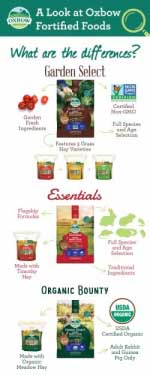Updated: January 9, 2024
While variety is beneficial when it comes to daily staples such as fresh greens and veggies, consistency is key when it comes to your small exotic mammal’s base diet (i.e. pellets). But, what do you do if you are ready to transition your little loved one to a healthier, more nourishing option? In this article, we’ll explore reasons to consider changing your pet’s diet, potential benefits of transitioning, and how to properly and safely transition your pet’s diet.
Reasons to Consider Changing Your Pet’s Diet
There are numerous reasons why you may want to change your small herbivore’s diet. Perhaps your rabbit is battling a chronic illness, or you have a guinea pig that has moved to another stage in life’s journey, or your veterinarian recommended a nutrition overhaul for your chinchilla. Maybe your hamster is a recent addition to the household and was previously fed a diet that didn’t fit your preferences as a pet parent. Or maybe you’re just looking to switch to a higher-quality, fortified pelleted diet for your gerbil.
Regardless of the reason, a proper diet transition for your exotic mammal is essential to ensure your beloved companion takes to the new food as seamlessly as possible and doesn’t overwhelm their gastrointestinal tract.
The Benefits of Transitioning Your Pet’s Diet
As many parents of small exotic mammals know, our little friends, and the specialized bacteria living within their digestive tracts, are very sensitive to even the most subtle changes in their environment, diet included. Even minor disruptions to your pet’s gut microbiome can lead to serious health issues like gastrointestinal stasis.
Though two diets may appear similar from a visual comparison, the ingredients, formula, and nutritional profile can be quite different. These differences, even if they appear subtle, necessitate an adjustment phase. Though some little ones can tolerate a “cold-turkey” transition, it is much safer and easier on them and their digestive tracts to do a gradual food transition.
Small herbivores such as rabbits, guinea pigs, hamsters, gerbils, and chinchillas are concentrate–selectors by nature, which means they tend to be quite picky when it comes to food. As prey species, this tendency served their wild ancestors well, helping to ensure they consumed the most nutritionally dense, non-toxic vegetation, but it can make for a frustrating diet transition in our domesticated companions.
Providing your exotic mammal with a gradual diet transition allows time for your pet to get used to the different textures, flavors, and aromas of their new food.
How to Properly Transition Your Exotic Mammal’s Diet
Properly transitioning your small pet to a new food, especially from a muesli mix (a mixture of seeds, nuts, pellets, and colorful mystery pieces) to a fortified, uniform pelleted diet is often not an easy task. In fact, it is a process that takes time and commitment to complete.
Though many pet parents have heard of, and even completed, the standard 7-day diet transition with their dogs and cats, small exotic mammals (herbivores) need quite a bit more time to adjust to a new diet. During this process, patience and persistence are key.
When transitioning diets, we strongly encourage pet parents to follow a minimum of a 4-week transition schedule. This drawn-out, gradual process gives your little one a good opportunity to become familiar with the new characteristics of the food.
There are many tactics that can be employed to ease the transition such as adding chopped up pieces of their favorite greens or veggies to the blend of new and old pellets, essentially making a “pellet salad.”
Owners have also found success mixing in small amounts of fragrant herbs like basil, cilantro, and parsley that often encourage your little one to sample the new pellets, and can help ensure a quicker, smoother transition for everyone involved.
Transitioning between diets can be confusing at any volume, but when we are discussing a feeding volume as small as one-eighth of a cup, the difficulty can be amplified. It is important to always use an actual measuring device to ensure the correct volume is being offered, as over-feeding pellets is a common nutritional issue.
Below you will find diet transition charts to help walk you through the transition process at our most commonly recommended feeding volumes.
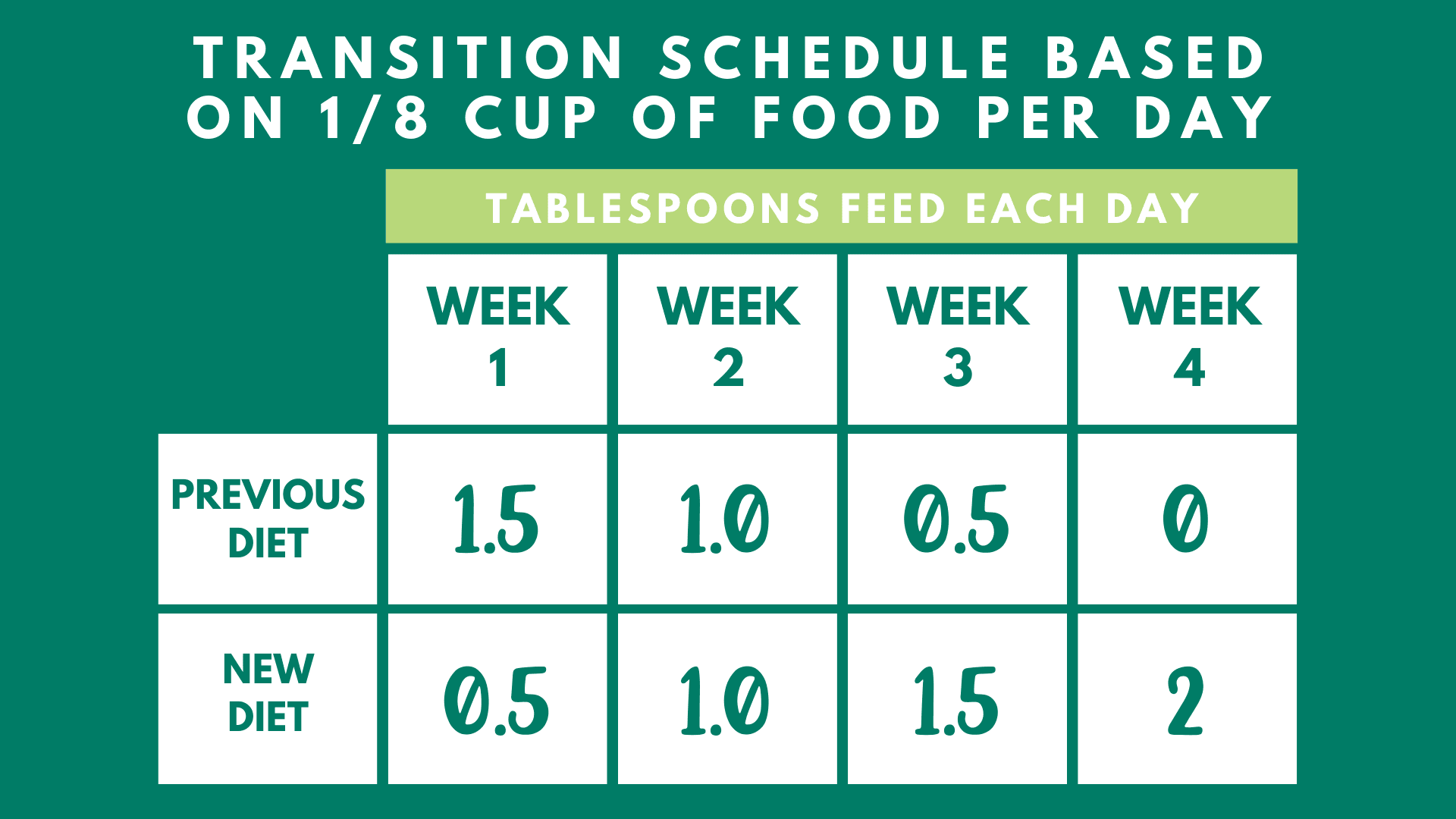 |
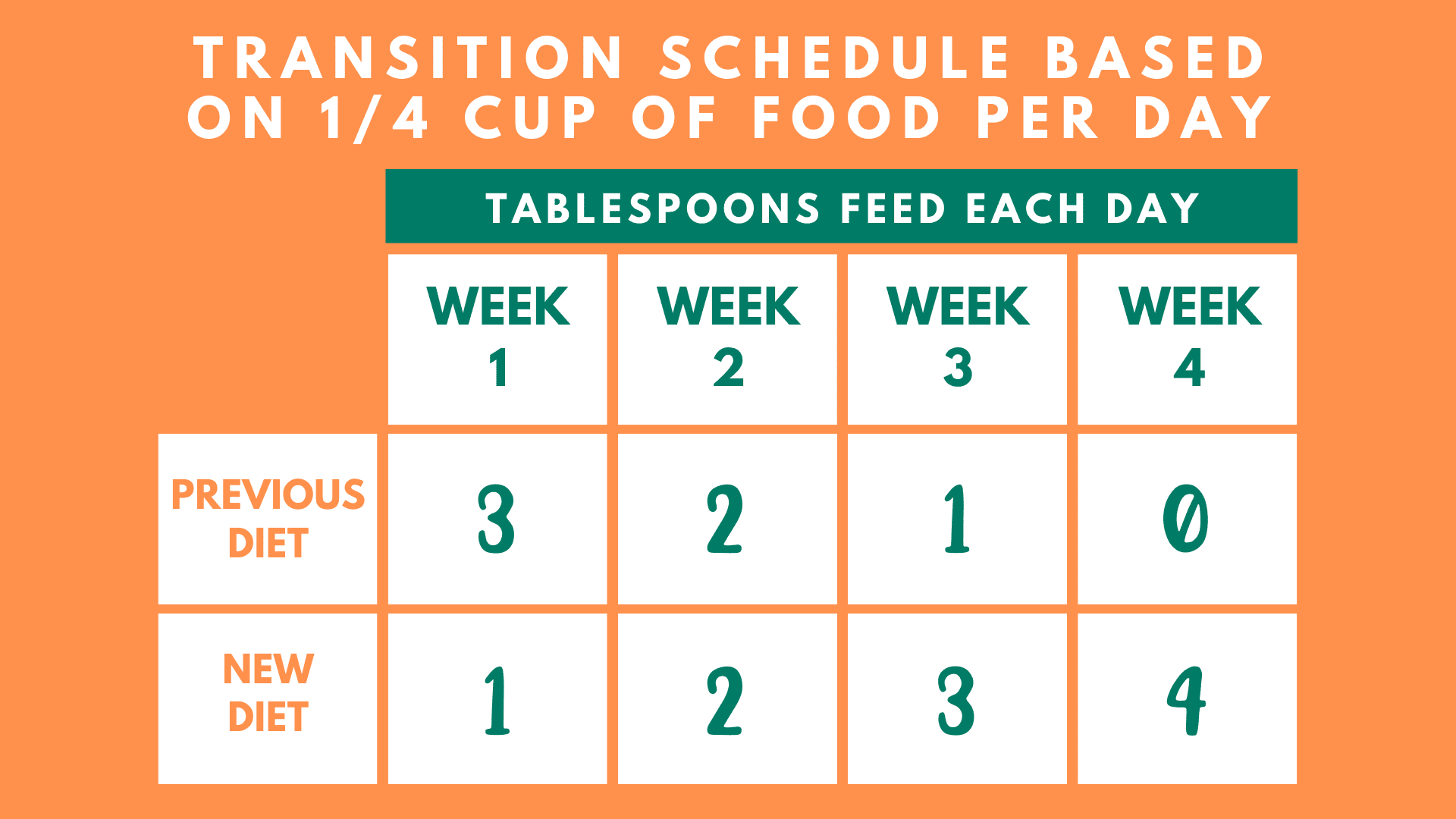 |
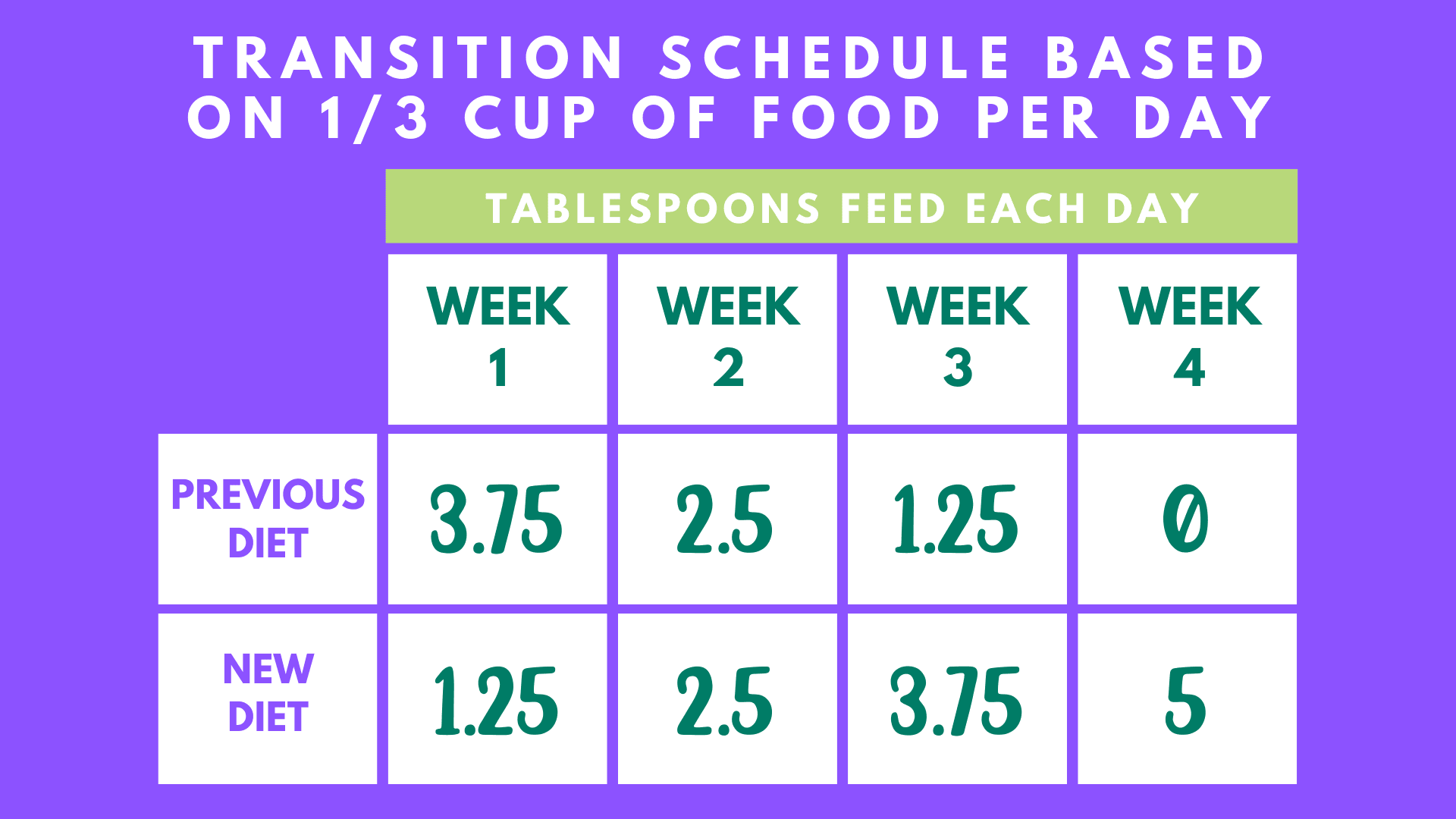 |
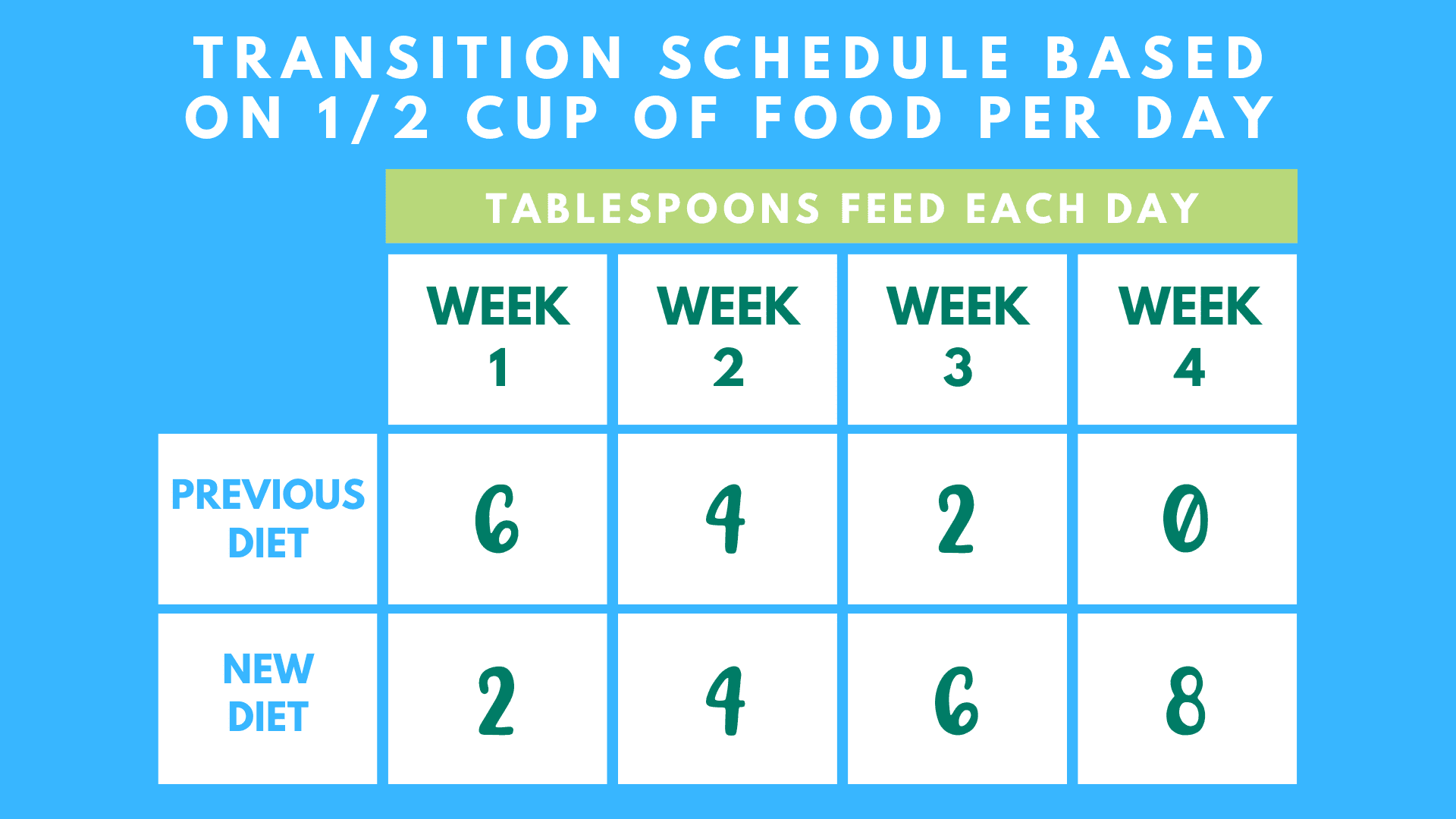 |
 |
Transitioning Between Brand Lines and Life-Stages
Offering multiple premium food options and life-stage diets allows Oxbow to provide a diversity of options to help us meet the unique needs and preferences of as many pets and their pet parents as possible.
Check out a side-by-side look at Oxbow foods.
Learn more about the importance of a young diet.
Though all Oxbow foods are nutritionally complete and balanced, each takes its own individual ingredient path to achieve a similar premium nutritional profile.
It is the variation in the ingredients which result in a difference in taste and aroma between different diets and life-stage lines. Because of these flavor/aroma differences, and the fact exotic companion mammals are notoriously selective, small herbivores will often refuse a food with which they are unfamiliar, even if it is produced by the same company.
This makes it just as important to follow the appropriate transition schedule outlined above when transitioning between Oxbow diet lines, or from a young formula to an adult diet.
Keeping these individual tastes and personalities in mind, the most important suggestion we offer pet parents is not to wait until you are completely out of one bag of food to purchase another.
Blending Your Exotic Mammal’s Food
Blending from one bag of food to the next helps broaden a pet’s palate by regularly experiencing a slight variety of tastes and aromas. This simple step will help limit picky eating tendencies.
This process does not have to be as detailed and drawn out as a full diet transition. Once you are down to about a week’s worth of feedings in one bag, begin transitioning to the next by adding enough food from the new bag to make a 50/50 mixture.
This is a good idea regardless of what brand of food you feed, and should also be standard practice between hay bags to curb a potential finicky response.
Monitoring Your Pet’s Food Transition
Once you’ve started your pet’s diet transition journey, it is essential you continue to monitor your little one closely for any changes in normal behavior or routine. One of the best ways to do this is by keeping a close eye on their fecal output.
Some changes in fecal color may be noted, especially if the ingredients between the two diets are quite a bit different, but fecal consistency, size, and frequency should remain relatively constant. If you notice your pet is starting experience loose stools, small or unusual-shaped fecal pellets, or diminishing fecal production all together, stop the diet transition and contact your trusted veterinarian as soon as possible.
The same is true if your small pet has stopped eating, has become withdrawn and/or less active, or begins to show signs of gastrointestinal discomfort. As prey species, small herbivores are naturally hard-wired to hide signs of disease or illness, so it is always best to share a discussion with your exotic veterinarian if changes are noted.
Learn more about how to tell if your rabbit is sick.
Rushing a diet transition can lead to digestive upset and blatant diet refusal, so remember to be patient with the process and with your small friend. Whatever the reason behind your exotic mammal’s updated diet, the best way to ensure a smooth and successful diet transition is to plan ahead and make sure the process is gradual and positive for everyone involved. Most importantly, ensure your veterinarian is kept in the loop and is consulted if any changes are noted in your kiddo’s feces, appetite, or overall demeanor.

